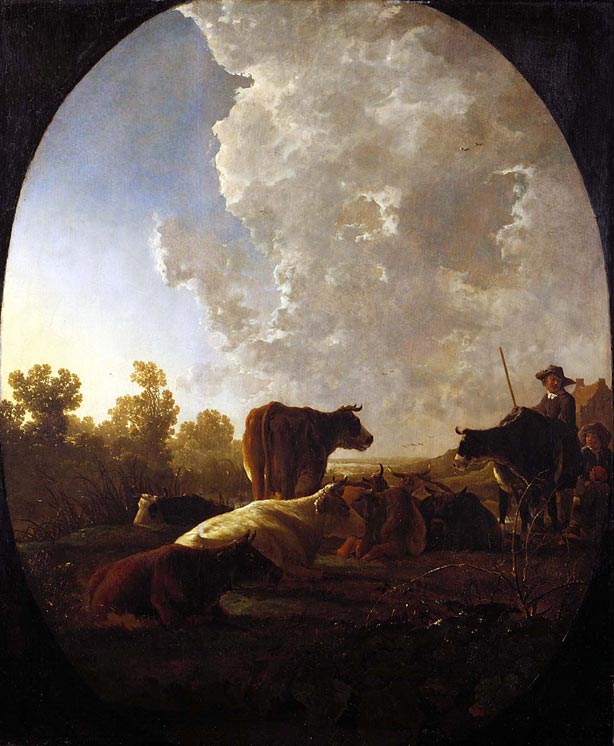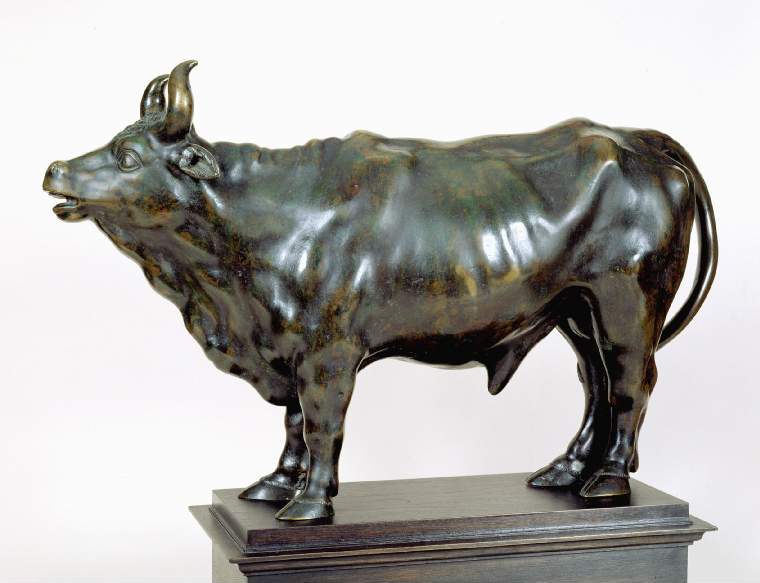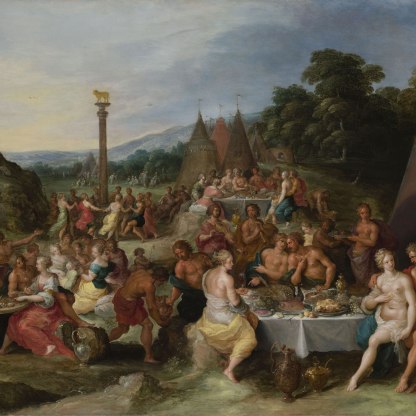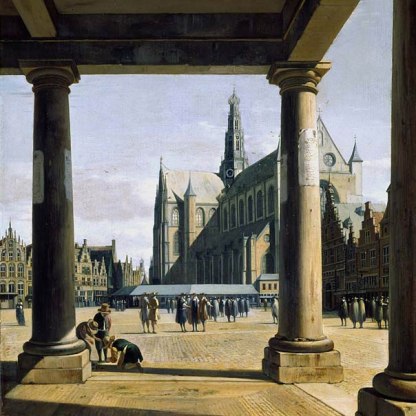Sunset After Rain

Do not disdain Holland, for we have beautiful cows that give us sweet milk, cream and butter, not twice a year, but twice a day. Jacob Cats, 1656
In the Netherlands in the seventeenth century, the cow was more than a source of excellent dairy products. As Jacob Cats’ proud boast suggests, the beast helped define the nation, as a kind of animal ambassador alongside which the Dutch, their land recently liberated from Spanish rule, could stand proudly on the international stage. In art and literature of the period, the cow represented fertility, wealth, loyalty and moderation. It symbolised the very land itself, so much of which had been reclaimed from the sea in the seventeenth century.
The Fitzwilliam owns a particularly fine seventeenth-century Netherlandish bronze of a bull [M.3-1997]. But of the many Dutch artists who depicted cows, none endowed them with more dignity or beauty than Aelbert Cuyp from Dordrecht.

It is hard to decide whether Cuyp’s chief subject here is the sky or the cows. It is certainly not the people. The farmer is half obscured, and his two young companions dwarfed, by a large black cow standing in front of them.
Our eyes are inevitably drawn to the magnificent central beast, whose noble profile, with its elegantly curving horns, is silhouetted against the vast cloud behind it. The low viewpoint from which we view him emphasises the animal’s grandeur. This is a solid, stable presence, and Cuyp has elevated the animal to an almost heroic status.
Even without the herd, Cuyp’s painting would be remarkable for its depiction of a weather condition familiar to northern Europeans The title by which the painting is known today dates from the nineteenth century. But it describes exactly the atmosphere that Cuyp has captured, that hopeful moment when a raincloud passes to reveal the late glow of a setting sun.
This remarkable meteorological realism was the hallmark of the best Dutch landscape painters of the time. As one contemporary writer, Constantijn Huygens, put it:
as far as naturalism is concerned ... in the works of these clever men, nothing is lacking but the warmth of the sun and the movement caused by the gentle breeze ...
In showing the pervasive effects of sunlight – upon the clouds, upon the trees, upon the wetlands that stretch into the distance, upon the animals themselves – Cuyp rivals his more celebrated French-born contemporary, Claude Lorrain, an example of whose work in the Fitzwilliam is illustrated below [PD.950-1963].

A painting by Aert van der Neer in the Fitzwilliam below [PD.250-1985], shows that the Dutch were equally adept at depicting the play of moonlight upon their landscape.

Unlike Claude, who achieved international fame in his lifetime, Aelbert Cuyp was scarcely known outside his native town of Dordrecht until the eighteenth century, when he was 'discovered' by the English. The enthusiasm of British collectors and artists for his landscapes means that most of his best work is to be found in this country. The Fitzwilliam canvas was the inspiration for a painting by Thomas Gainsborough, Open Landscape with Herdsman and his Sweetheart and a Herd of Cows, left, now in the National Gallery of Ireland in Dublin. And so pervasive was Cuyp’s influence upon nineteenth-century taste, that John Ruskin pleaded with contemporary artists to avoid depicting 'the eternal brown cows in ditches'.
Themes and periods
Data from our collections database
In England by c. 1767; William Wells, Redleaf, (by 1834); his sale, Christie's, 12/13 May 1848 lot 90, bought by Ralph Fletcher; his sale, Christie's, 28 June 1851, lot 60, bought by Grundy (d. 1859); Ralph Gibson; Lord Francis Gibson (d. 1859); J. Hope Barton (by 1868); Lewis Fry (by 1876), and by descent to the late Dr. Lewis S. Fry; with the heirs of Dr. Fry; with Thomas Agnew & Son Ltd
Legal notes
From the Hitchcock, Cunliffe, Perceval and University Purchase Funds with contributions from the Friends of the Fitzwilliam Museum, the National Art Collections Fund and the Victoria and Albert Museum, Grant-in-Aid.
Acquisition and important dates
- Method of acquisition: Bought
- Dates: 1975
Dating
Maker(s)
- Cuyp, Aelbert Painter
Materials used in production
Read more about this recordStories, Contexts and Themes
Other highlight objects you might like
Suggested Curating Cambridge products
Sign up to our emails
Be the first to hear about our news, exhibitions, events and more…






